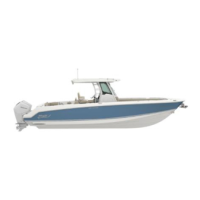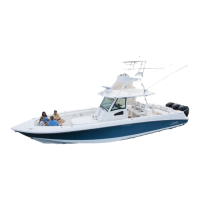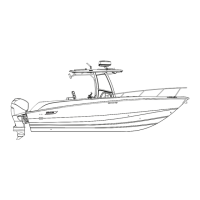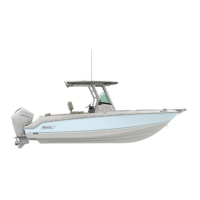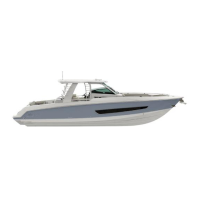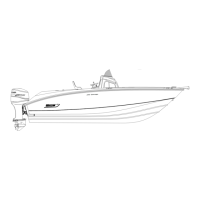5-5
Section 5 • Care & Maintenance
320 Outrage
R
Helm Seat Track Maintenance
The track system will need occasional maintenance
to remain in proper working condition. Sea salt , grit
and dirt will build-up and interfere with the slide
mechanism. Rinsing with fresh water after each use
will eliminate most salt and dirt residue. Make sure
to pull the slide to its most forward position and rinse
thoroughly. Check the slide every 4 months, depend-
ing on usage. If neccessary, lubricate the slide and
handle with a marine grade grease for longevity and
continued smooth operation.
NOTICE
Never use a dry cloth or duster or glass cleaning
solutions on acrylic.
NOTICE
DO NOT use solvents such as acetone, silicone
spray, benzine, carbon tetrachloride, fire
extinguisher fluid, dry claening fluid or lacquer
thinner on acrylic.
The above substances will attack the surface of
the vinyl.
Storing Clear Vinyl
The clear vinyl should never be folded or creased as
cracking will result. The recommended method of
storage is to roll or lay the panels down flat. To
protect the clear vinyl from rubbing against itself
while rolled or stored flat, place a piece of very soft,
nonabrasive cloth between the pieces.
Cleaning The Plastic Headliner and
Intrument gauges
Never use abrasives or rough, dirty cloths to clean
plastic parts. A mild household detergent or plastic
cleaner should be used. Wipe clean with a damp
chamois.
When instruments are exposed to a saltwater
environment, salt crystals may form on the bezel and
plastic covers. Remove the salt crystals with a soft
damp cloth. Clean with a mild household detergent
or plastic cleaner.
parts in good working condition and keep a good
appearance, you will need to keep them clean. The fabric
should be cleaned regularly before substances such as
dirt, pollen, etc. are allowed to accumulate on and
become embedded in the fabric. The canvas can be
cleaned without being removed from the installation.
Simply brush off any loose dirt, pollen, etc. hose down
and clean with a mild solution of a natural soap in
lukewarm water (no more than 100° F / 38° C). Rinse
thoroughly to remove soap. Allow the canvas to
completely air-dry. After each use especially in salt water
areas, rinse the canvas completely with fresh cold water.
Let the canvas dry completely before stowing.
DO NOT fold or store any of the canvas pieces while
wet. All canvas should be rolled or folded when dry and
store in a clean, dry space.
Lubricate the snaps of the canvas with petroleum jelly,
use a parafin wax on the zippers to keep them in proper
working order. If you have stubborn cleaning cases call
your Boston Whaler
®
dealer for proper cleaning
procedures.
Clear Vinyl (Acrylic)
To clean acrylic, first flood it with water to wash off as
much dirt as possible. Next, use your bare hand with
plenty of water, to feel and dislodge any caked dirt or
mud. A soft grit-free cloth may then be used with a
nonabrasive soap or detergent. A soft sponge, kept clean
for this purpose, is excellent. Blot dry with a clean damp
chamois.
Grease and oil may be removed from acrylic with
kerosene, hexane, white (not aviation or ethyl) gasoline
or aliphatic naptha (no aromatic content).
Remove small scratches with fine automotive
acrylicrubbing and polishing compound.
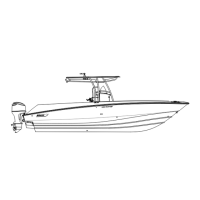
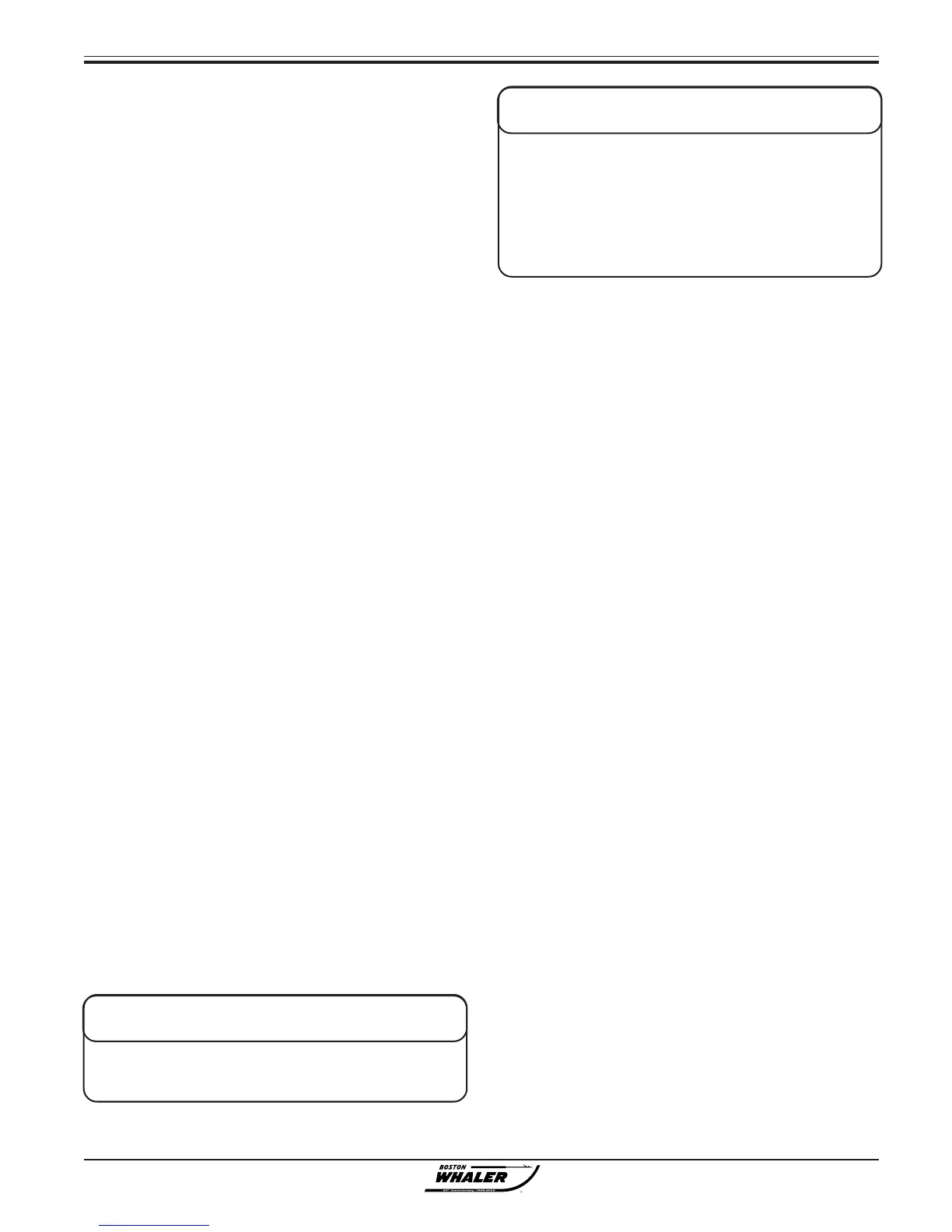